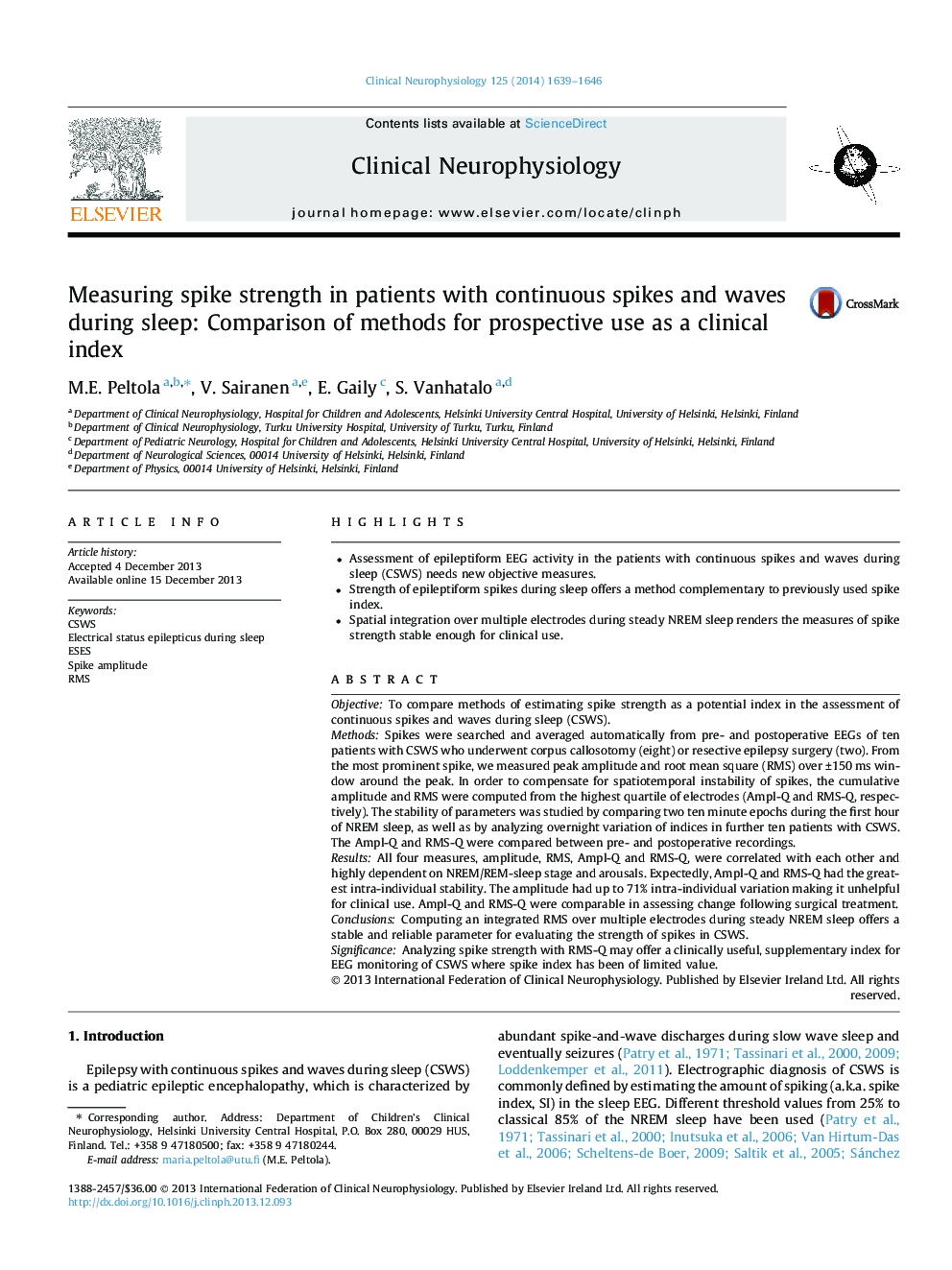| Article ID | Journal | Published Year | Pages | File Type |
|---|---|---|---|---|
| 3043491 | Clinical Neurophysiology | 2014 | 8 Pages |
•Assessment of epileptiform EEG activity in the patients with continuous spikes and waves during sleep (CSWS) needs new objective measures.•Strength of epileptiform spikes during sleep offers a method complementary to previously used spike index.•Spatial integration over multiple electrodes during steady NREM sleep renders the measures of spike strength stable enough for clinical use.
ObjectiveTo compare methods of estimating spike strength as a potential index in the assessment of continuous spikes and waves during sleep (CSWS).MethodsSpikes were searched and averaged automatically from pre- and postoperative EEGs of ten patients with CSWS who underwent corpus callosotomy (eight) or resective epilepsy surgery (two). From the most prominent spike, we measured peak amplitude and root mean square (RMS) over ±150 ms window around the peak. In order to compensate for spatiotemporal instability of spikes, the cumulative amplitude and RMS were computed from the highest quartile of electrodes (Ampl-Q and RMS-Q, respectively). The stability of parameters was studied by comparing two ten minute epochs during the first hour of NREM sleep, as well as by analyzing overnight variation of indices in further ten patients with CSWS. The Ampl-Q and RMS-Q were compared between pre- and postoperative recordings.ResultsAll four measures, amplitude, RMS, Ampl-Q and RMS-Q, were correlated with each other and highly dependent on NREM/REM-sleep stage and arousals. Expectedly, Ampl-Q and RMS-Q had the greatest intra-individual stability. The amplitude had up to 71% intra-individual variation making it unhelpful for clinical use. Ampl-Q and RMS-Q were comparable in assessing change following surgical treatment.ConclusionsComputing an integrated RMS over multiple electrodes during steady NREM sleep offers a stable and reliable parameter for evaluating the strength of spikes in CSWS.SignificanceAnalyzing spike strength with RMS-Q may offer a clinically useful, supplementary index for EEG monitoring of CSWS where spike index has been of limited value.
